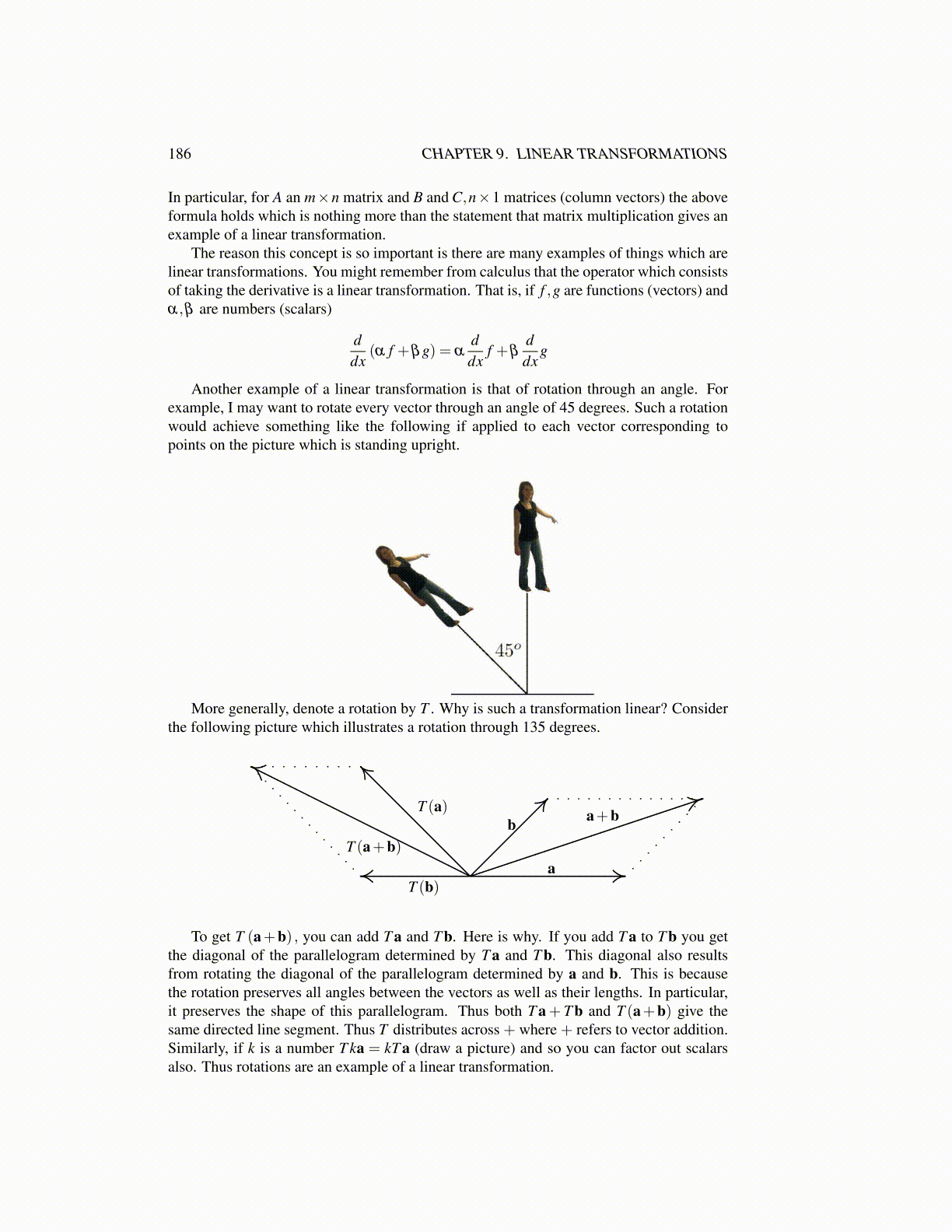
186 CHAPTER 9. LINEAR TRANSFORMATIONS
In particular, for A an m×n matrix and B and C,n×1 matrices (column vectors) the aboveformula holds which is nothing more than the statement that matrix multiplication gives anexample of a linear transformation.
The reason this concept is so important is there are many examples of things which arelinear transformations. You might remember from calculus that the operator which consistsof taking the derivative is a linear transformation. That is, if f ,g are functions (vectors) andα,β are numbers (scalars)
ddx
(α f +βg) = αddx
f +βddx
g
Another example of a linear transformation is that of rotation through an angle. Forexample, I may want to rotate every vector through an angle of 45 degrees. Such a rotationwould achieve something like the following if applied to each vector corresponding topoints on the picture which is standing upright.
More generally, denote a rotation by T . Why is such a transformation linear? Considerthe following picture which illustrates a rotation through 135 degrees.
a
b a+bT (a)
T (b)
T (a+b)
To get T (a+b) , you can add T a and T b. Here is why. If you add T a to T b you getthe diagonal of the parallelogram determined by T a and T b. This diagonal also resultsfrom rotating the diagonal of the parallelogram determined by a and b. This is becausethe rotation preserves all angles between the vectors as well as their lengths. In particular,it preserves the shape of this parallelogram. Thus both T a+ T b and T (a+b) give thesame directed line segment. Thus T distributes across + where + refers to vector addition.Similarly, if k is a number T ka = kT a (draw a picture) and so you can factor out scalarsalso. Thus rotations are an example of a linear transformation.